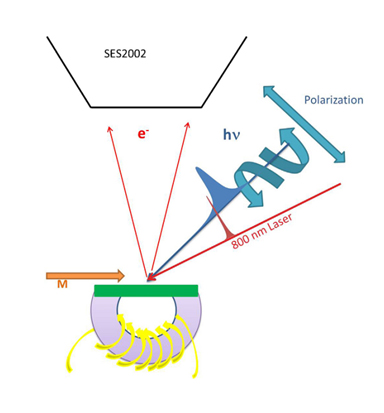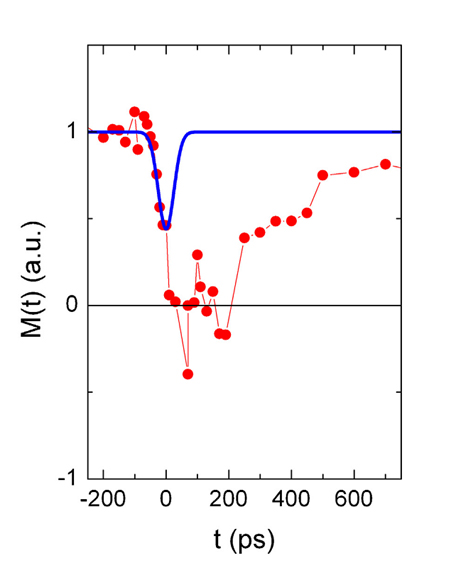The fast demagnetization process in magnetic films is a phenomenon that has been attracting increasing research interest for its prospective applications in data storage. Studies are most often performed with laser pump-probe techniques and are rarely coupled with studies of the electronic structure of materials. Results from French and Italian teams on the TEMPO beamline show that the electronic and magnetic properties can be investigated by time- and angle-resolved photoelectron spectroscopy in laser pump-probe experiments using SOLEIL's synchrotron radiation as the probe.
The experiments were performed with the hybrid time structure currently available at SOLEIL using the electron energy analyzer of the TEMPO beamline with the geometry indicated in Fig.1. The 50 femtosecond laser pulses from a Coherent REGA 9040 are spatially superposed and synchronized to the soft x-ray synchrotron pulses at the sample surface. Laser and synchrotron focal spots were 300 microns and 150 microns respectively. The experiments were performed in a surface science environment on epitaxial Gd layers grown on W(110). The demagnetization of the 20 nm Gd (0001) layer was measured using dichroic resonant Auger spectroscopy. The modifications induced in the Gd layer magnetization as a function of time is presented in Fig. 2. The scientists could induce complete demagnetization with laser pulses at a repetition rate of 141 KHz. These results show that electronic and magnetic properties can be studied using time- and angle-resolved photoelectron spectroscopy in laser pump / synchrotron radiation probe experiments.

Schematic representation of the sample environment and the experimental geometry in the UHV photoemission chamber of the TEMPO beamline.

Time-resolved magnetization behavior of the Gd(0001) layer obtained by integrating the the resonant auger magnetic circular dichroism at the Gd-M5 edge. The blue curve indicates the synchrotron radiation probe width.
